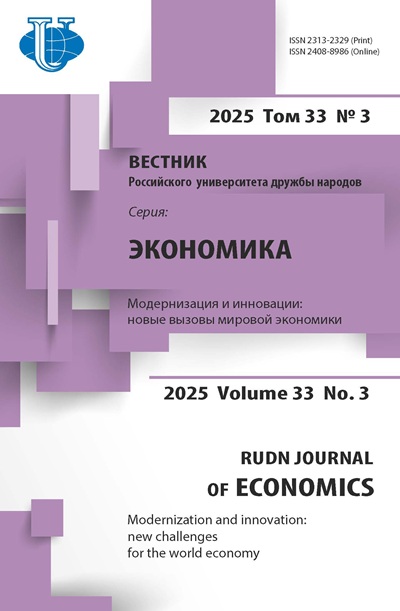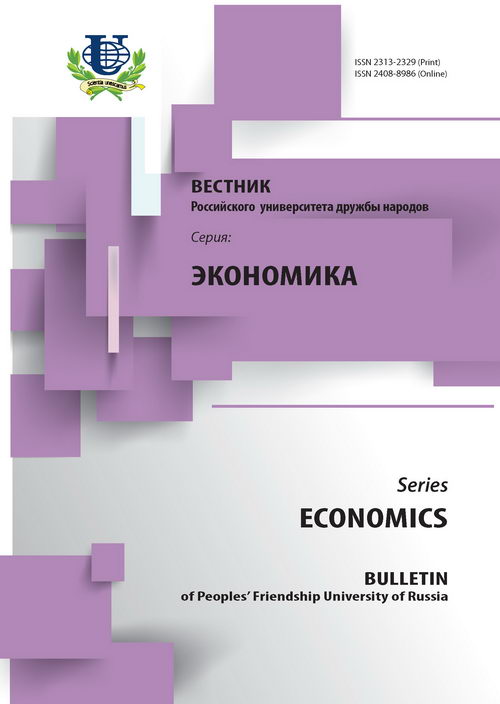№ 1 (2016)
Статьи
АВТОМОБИЛЕСТРОЕНИЕ В СТРАНАХ ЦЕНТРАЛЬНОЙ ВОСТОЧНОЙ ЕВРОПЫ: СОВРЕМЕННЫЕТЕНДЕНЦИИ РАЗВИТИЯ
Аннотация
В последние годы отрасль автомобилестроения динамично развивается в странах Центральной и Восточной Европы (ЦВЕ). Так, за период 2000-2014 гг. доля ЦВЕ в мировом производстве автомобилей возросла с 1,8 до 5%, а в европейском - с 5 до 20%. Мотором развития автомобилестроения в регионе стал мощный приток иностранного капитала, который объясняется не только благоприятными экономическими факторами (сохранившиеся с советских времен производственные мощности, относительно низкая стоимость рабочей силы по сравнению с ее достаточно высокой квалификацией, удачное географическое положение), но также и эффективная промышленная политика правительств стран ЦВЕ. Зарубежные инвесторы, среди которых Volkswagen, Renault, Peugeot-Citroen, Fiat, GM, Ford, Toyota, Hyundai-KIA, Suzuki, использовали различные способы выхода на рынок стран ЦВЕ: сначала «браунфилды» и СиП - для проникновения на рынок, а затем - «гринфилды» - для закрепления на нем. Авторы приходят к выводу, что характерной особенностью автомобилестроения ЦВЕ стал его экспортоориентированный характер, а ключевым трендом развития - формирование в странах ЦВЕ цепочек создания стоимости, размещение сборочных заводов (здесь лидируют Чехия и Словакия), а затем и формирование сети поставщиков различных уровней.
Вестник Российского университета дружбы народов. Серия: Экономика. 2016;(1):7-21
 7-21
7-21


ТРАНСАТЛАНТИЧЕСКАЯ ЭКОНОМИЧЕСКАЯ ИНТЕГРАЦИЯ: ВЫЗОВЫ И ВОЗМОЖНОСТИ ДЛЯ РОССИЙСКОГО БИЗНЕСА
Аннотация
В статье проводится анализ основных направлений формирующейся системы институциональных договоренностей между США и ЕС в рамках текущего процесса трансатлантической интеграции. Рассматриваются наиболее дискуссионные направления интеграции, а также оцениваются угрозы в результате заключения договоренностей о партнерстве, в том числе, для российского бизнеса. Автор приходит к выводу о том, что при условии отмены санкций США и ЕС трансатлантическое партнерство не будет иметь существенных последствий для России. Партнерство несет более серьезные последствия для российской экономики в случае сохранения санкций.
Вестник Российского университета дружбы народов. Серия: Экономика. 2016;(1):22-31
 22-31
22-31


ПРОБЛЕМЫ БАНКОВСКОГО СЕКТОРА ЗОНЫ ЕВРО В УСЛОВИЯХ МИРОВОГО ФИНАНСОВОГО КРИЗИСА
Аннотация
Данная статья посвящена анализу некоторых проблем банковского сектора стран зоны евро в период мирового финансового кризиса 2007 г. Рассматривается развитие банковского кризиса в Европе и основные предпринятые антикризисные меры, призванные стабилизировать банковский сектор. В статье выделяются некоторые проблемы банковского сектора: сокращение объемов кредитования банками нефинансовых организаций, повышение процентных ставок и кризис доверия к банковскому сектору. На основе данных за 2006-2015 гг. выявлены тенденции развития некоторых показателей состояния банковского сектора и проведен сравнительный анализ докризисного и посткризисного уровней показателей. Сделан вывод о том, что антикризисные меры не могли полностью решить все рассмотренные проблемы банковского сектора зоны евро.
Вестник Российского университета дружбы народов. Серия: Экономика. 2016;(1):32-41
 32-41
32-41


ФОРМИРОВАНИЕ ОПТИМАЛЬНОЙ СТРАТЕГИИ РАЗВИТИЯ МОЛОЧНО-ПРОДУКТОВОГО КОМПЛЕКСА ВЕНЕСУЭЛЫ
Аннотация
В статье на основании проведенного исследования предложена система модернизации молочно-продуктового комплекса, направленная на рост эффективности производства, повышение производительности труда и продуктивность молочного стада, расширение рыночных позиций отечественных производителей молока, увеличение государственной поддержки аграрного производства, оценку и анализ реализации модернизации на разных этапах функционирования модели, что обеспечивает непрерывный мониторинг внешней и внутренней среды функционирования молочно-продуктового комплекса, позволяет оперативно выявлять негативные ситуации и проводить корректировку механизма модернизации молочно-продуктового комплекса с учетом выявленных нарушений. Универсальность предлагаемой модели состоит в возможности ее использования на любом уровне управления: как на макроэкономическом, так и на уровне аграрного предприятия.
Вестник Российского университета дружбы народов. Серия: Экономика. 2016;(1):42-49
 42-49
42-49


ГОСУДАРСТВЕННО-ЧАСТНОЕ ПАРТНЕРСТВО В СТРАНАХ АФРИКИ: ЦЕЛИ И УСЛОВИЯ РАЗВИТИЯ, ФАКТОРЫ УСТОЙЧИВОСТИ И ОСНОВНЫЕ ХАРАКТЕРИСТИКИ
Аннотация
В статье рассматриваются сущность и различные аспекты государственно-частного партнерства (ГЧП) в развивающихся странах Африки. Анализируются факторы, способствующие и препятствующие развитию партнерства, а также факторы устойчивости ГЧП в стране. Особо подчеркивается роль законодательства на разных этапах реализации проектов ГЧП. Выделяются принципы, на которых должно базироваться истинное партнерство государства и частного сектора, при этом отмечается большое значение мнения общества по поводу проектов ГЧП, особенно рассчитанных на долгосрочный период. Освещается вопрос предоставления гарантий всем участникам партнерства в целях минимизации рисков и возможного экономического ущерба. Авторы делают вывод, что ГЧП - это не панацея от всех социально-экономических бед и проблем развивающихся стран. Но в условиях нехватки инвестиционных ресурсов ГЧП может сыграть положительную роль в реализации водных и санитарных проектов.
Вестник Российского университета дружбы народов. Серия: Экономика. 2016;(1):50-57
 50-57
50-57


СОЦИАЛЬНО-ЭКОНОМИЧЕСКАЯ ДИФФЕРЕНЦИАЦИЯ РЕГИОНОВ РЕСПУБЛИКИ КАЗАХСТАН
Аннотация
В условиях регионализации экономики и глобализации мировых рынков товаров и услуг именно регионы выступают как самостоятельные субъекты конкуренции. В рыночных условиях регионы состязаются между собой за инвестиционные ресурсы (государственные, частные и иностранные), привлечение предприятий-налогоплательщиков, а также за все источники ресурсов и рынки сбыта. При этом регионы являются самостоятельными субъектами на национальных и международных рынках. В статье анализируются ключевые показатели социально-экономического развития регионов Казахстана, систематизированы методологические подходы к измерению региональной конкурентоспособности путем расчета традиционных индикаторов и интегральных показателей. Выявлены негативные последствия опережающего развития сырьевого сектора: увеличивается социально-экономическая дифференциация регионов; происходит истощение сырьевой базы. Опережающее развитие сырьевого сектора приводит к появлению проблемных несырьевых регионов, характеризующихся относительно низким уровнем реальных денежных доходов населения, низкой бюджетной обеспеченностью за счет собственных источников дохода.
Вестник Российского университета дружбы народов. Серия: Экономика. 2016;(1):58-69
 58-69
58-69


КЛАССИФИКАЦИЯ ОСНОВНЫХ МЕТОДОВ И ИНСТРУМЕНТОВ БЕРЕЖЛИВОГО ПРОИЗВОДСТВА
Аннотация
Недостаточная теоретическая разработанность вопросов в области классификации постоянно растущего числа разнообразных инструментов и методов рассматривается как одна из возможных причин, порождающих проблемы организации бережливого производства на российских промышленных предприятиях. Автор предлагает три возможных подхода классификации основных методов и инструментов бережливого производства: по видам потерь, по направлениям и по характеру практического применения. Описанные в работе классификации помогут более эффективно применять на практике основные методы и инструменты бережливого производства.
Вестник Российского университета дружбы народов. Серия: Экономика. 2016;(1):70-77
 70-77
70-77


ТЕХНОЛОГИЧЕСКОЕ ПРОГНОЗИРОВАНИЕ: ПРОБЛЕМЫ И МЕТОДЫ
Аннотация
В статье рассматриваются основные проблемы технологического прогнозирования в условиях формирования и развития инновационно-ориентированной экономики. Раскрываются сущность и основные методы технологического прогнозирования, особенности их применения на практике. На основе проведенного анализа автор делает вывод о необходимости создания моделей, в которых различные нетехнологические факторы используются в качестве экзогенных переменных, прогнозируемых таким образом, что полученные посредством их значения могли быть использованы в качестве входных данных для модели инновационно-технологического прогнозирования.
Вестник Российского университета дружбы народов. Серия: Экономика. 2016;(1):78-86
 78-86
78-86


НАШИ АВТОРЫ
Вестник Российского университета дружбы народов. Серия: Экономика. 2016;(1):87-88
 87-88
87-88















